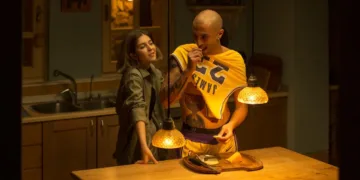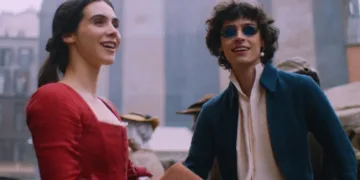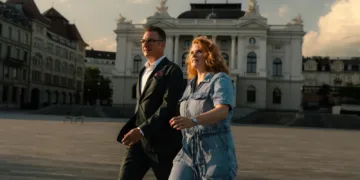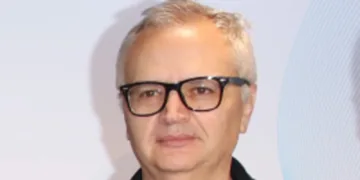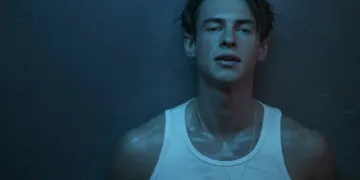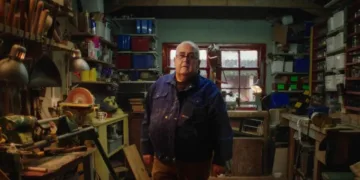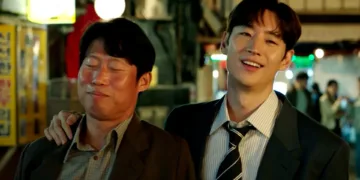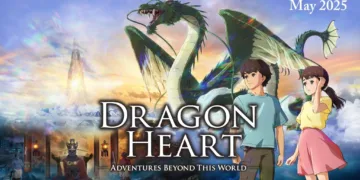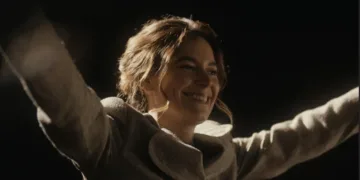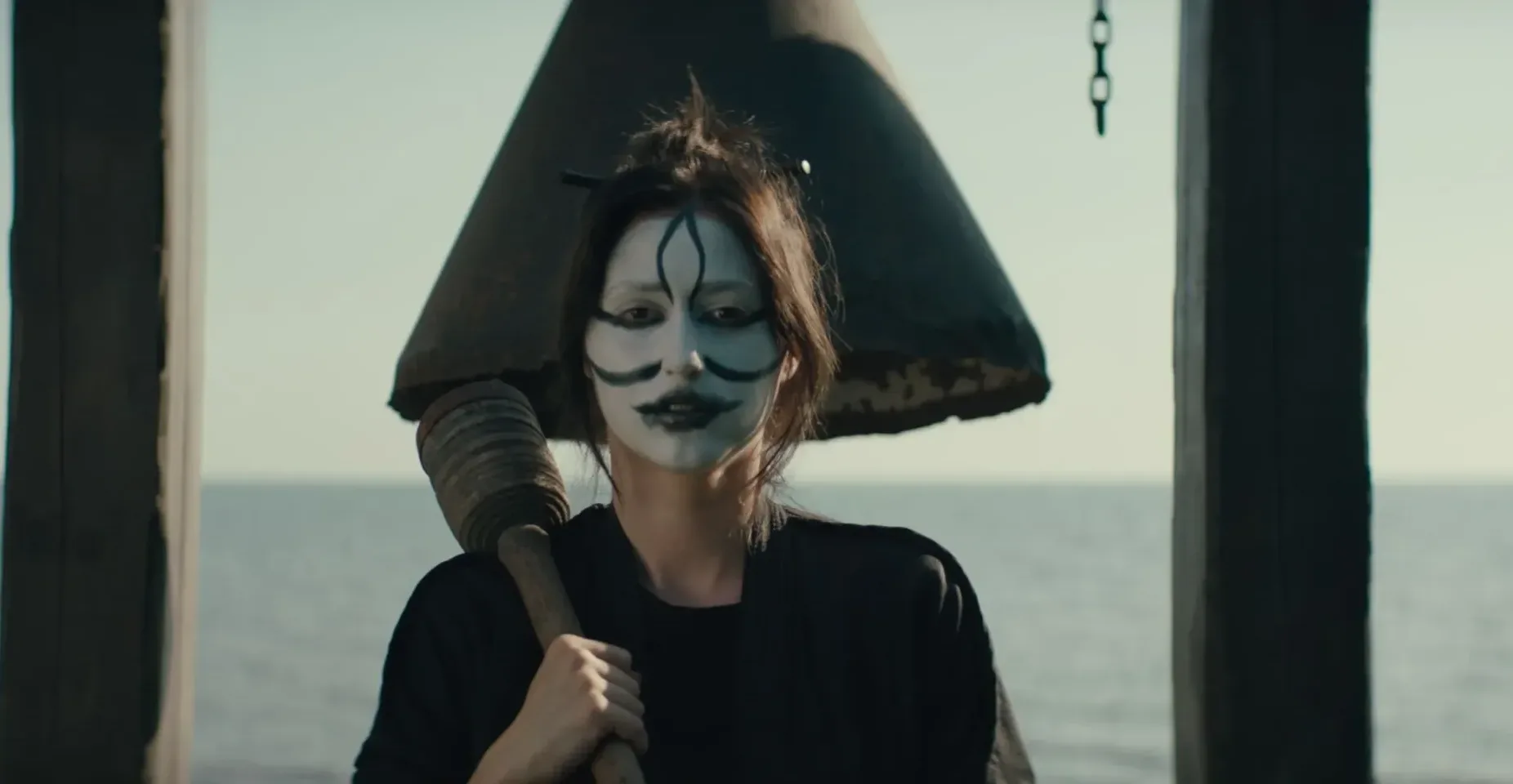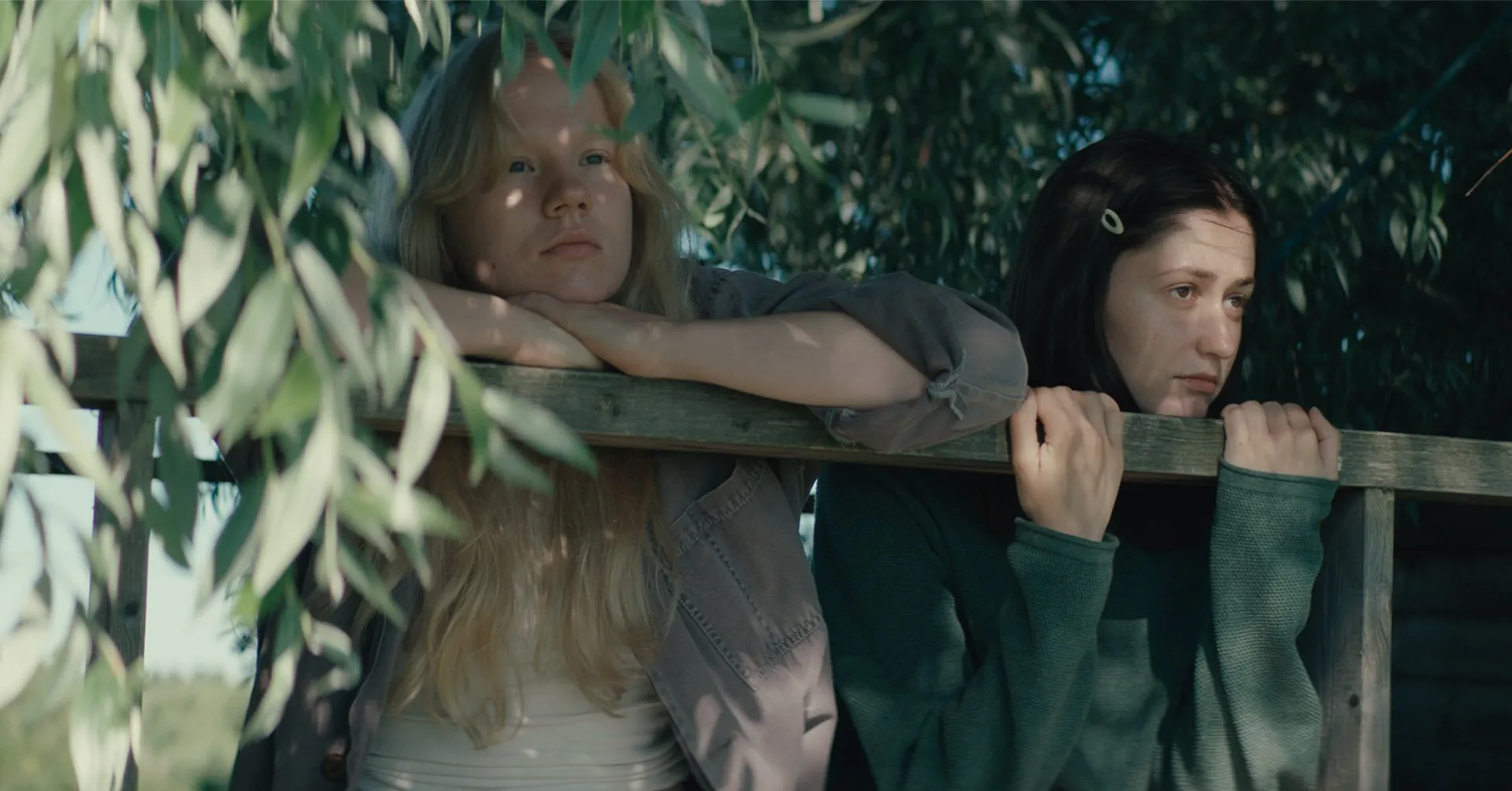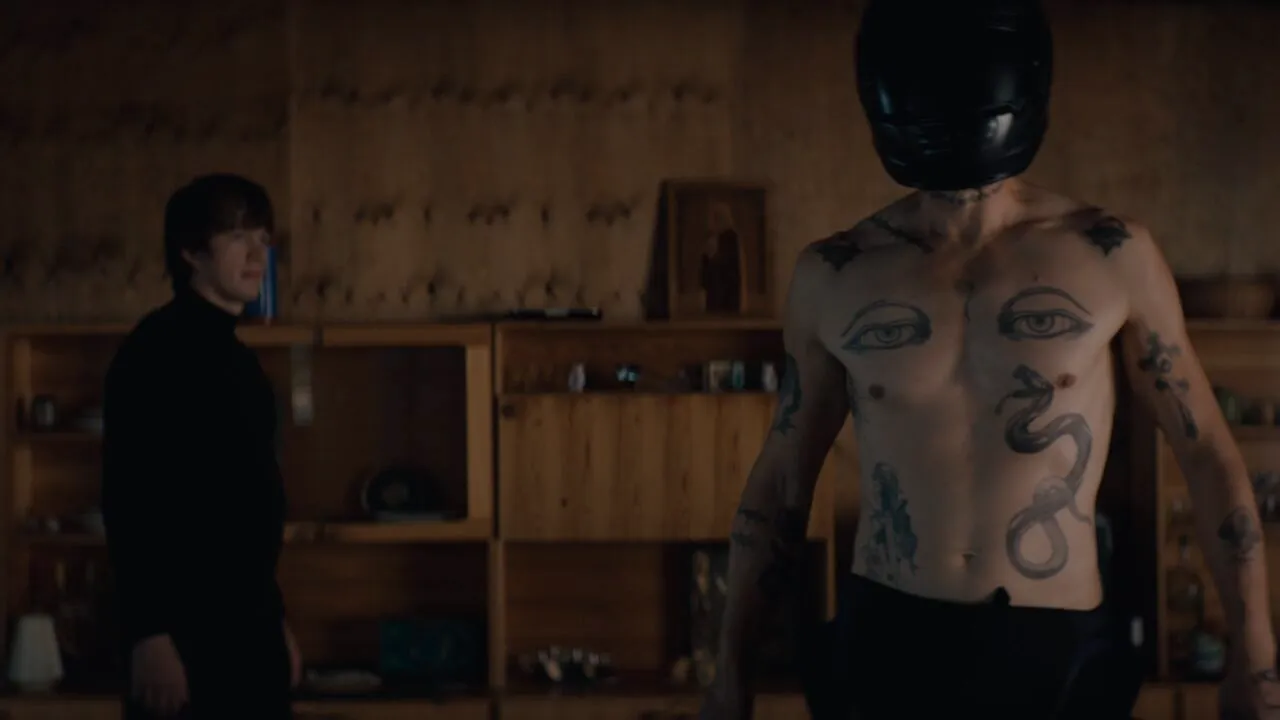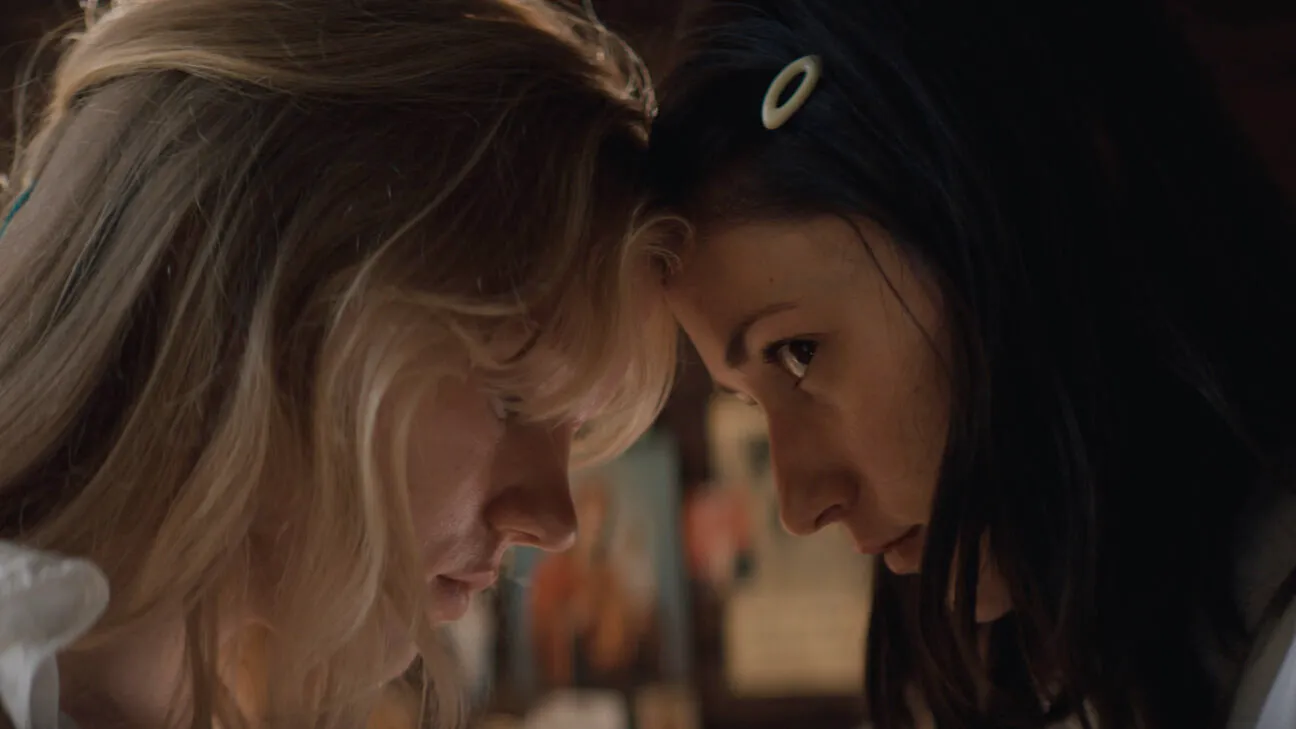The film unfurls its narrative along the contours of an ancient art form, a series of eight depictions that began in China and found their lyrical expression in Japanese culture.
This venerable tradition, characterized by distinct scenic portraits, serves as a quiet architect for the film’s segmented design. Each chapter bears the weight of a view—a moment captured in time and memory—which whispers of a past where nature and spirit intertwined.
Set against the stark backdrop of a lakeside fishing community near Lake Peipsi, the film establishes a setting that contrasts sharply with its Asian antecedents.
Here, the serene yet haunting expanse of water, with its weathered shores and quiet despair, becomes a stage for a cultural meeting. Elements from Estonian, Finnish, and Japanese heritage merge in the imagery and narrative, forming an unexpected dialogue between distant lands and epochs.
At the helm, Marko Raat channels his artistic impulse by reinterpreting venerable symbols into a visual vernacular that interrogates the human condition. His approach is neither conventional nor tame; it summons echoes of folklore and myth, inviting contemplation of life’s darker, inevitable questions without yielding to easy certainties.
Fragmented Vistas and Echoes of Tragedy
The film unfolds in segments, each chapter a reflection of one of the traditional scenic portrayals. Eight parts stand before the viewer, each named after a specific view that hints at the hidden moods of the narrative.
Every chapter offers a quiet meditative space where the visual and verbal merge, inviting reflection on time, fate, and human fragility.
A pivotal accident on a boat marks a turning point in the story, its shockwave binding disparate lives in a moment of unspeakable loss. This tragic event restructures the human web within the community, subtly exposing secrets and reshaping interpersonal dynamics.
The ripple effects of the catastrophe linger in every scene, stirring an undercurrent of inevitable sorrow that persists as characters struggle with internal and external ruptures.
Throughout the film, hushed voice-overs reveal the characters’ inner turmoil. These murmured insights intersperse the visual narrative, offering a glimpse into souls caught in the tension of an elusive reality.
The sequence of events does not follow a simple path; rather, it wanders through a series of moments that mirror the fragmented nature of memory and emotion, evoking the sensation of wandering through half-remembered dreams.
Elements of myth and surreal imagery are interlaced within the fabric of a modest community setting. The narrative shifts between moments of stark reality and almost otherworldly glimpses, where symbolic gestures and recurring motifs speak to deep existential questions.
The film’s structure, marked by its episodic nature, acts as a canvas upon which these themes are rendered, challenging the viewer to confront the mysteries hidden within everyday life without offering clear resolutions.
Spectral Portraits and Unraveled Psyches
The film presents a mosaic of characters whose lives intertwine with the weight of loss and the burden of unspoken truths. At the center stands Õnne, the local teacher whose quiet dignity and measured grief hint at a history of personal sacrifice. Her role is set against the backdrop of a community shattered by tragedy.
Hanake, a sensitive yet determined student, reflects the restless spirit of youth, her inner conflict captured in moments of subdued expression. Roman, the fishing inspector, exudes a somber authority; his weathered features mirror a life steeped in duty and a personal reckoning with past failures.
Each figure bears the scars of a calamity that reshapes not only their paths but also the collective consciousness of their small world.
Supporting characters add further layers to this portrait. An enigmatic painter, whose silent strokes evoke a mysterious force, and other community members, whose fleeting interactions hint at deeper, hidden narratives, contribute to a shared atmosphere of disquiet and introspection.
Their presence enriches the portrayal of communal mourning and a tentative hope that flickers in unexpected moments.
The performances stand out through a precise balance of subtlety and intensity. Actors convey the unspoken with minimal dialogue and deliberate gestures; a lingering glance, a hesitant pause, or the careful modulation of tone capture internal conflicts that words cannot express.
The film’s style permits moments of raw exposure, where the physicality of the actors communicates complex states of despair, remorse, and a quiet resilience.
Relationships among the characters emerge as intricate and often unsteady. Familial bonds, fragile romances, and the unsaid ties that hold the community together are depicted with a measured sensitivity.
These connections, both visible and obscured, invite reflection on the nature of human bonds and the shadow of past events that continues to shape the contours of their lives.
Ethereal Visions and Reverberant Echoes
The film’s camera reveals landscapes that float between the tangible and the abstract, capturing expansive, poetic vistas of a lake that shimmers with muted melancholy.
The wide shots offer a view of nature as a living canvas, where the soft glow of subdued light meets the transient bloom of cherry blossoms. In these frames, even industrial forms such as wind turbines appear as silent sentinels, their presence a reminder of humanity’s ceaseless imprint on a realm of stillness and shadow.
Attention to production design transforms each scene into a study in paradox. Costumes, props, and meticulously arranged sets evoke an air of timelessness, constructing an environment that is at once firmly rooted in local tradition and open to mythic reinterpretation.
The visual symbols presented throughout serve as visual metaphors—a carefully placed artifact or an unusual color scheme may speak to unspoken narratives that haunt the characters’ existence.
Sound pulses gently beneath the visual rhythm, with a neoclassical score that underscores the film’s reflective tone. Ambient layers of sound, punctuated by whispered prayers and introspective soliloquies, invite the viewer to listen to the internal reverberations of a community marked by silent sorrow.
The interplay of these auditory elements with the images on screen creates moments where sight and sound coalesce into a form that transcends simple narrative, stirring questions about impermanence and the often imperceptible passage of time.
There are scenes where the visual and auditory dimensions intertwine—a brief shot of the lake’s surface paired with a soft, resonant murmur, a moment when the camera lingers and the ambient sounds echo the unvoiced despair of the characters. These instances leave one pondering the nature of reality and the role of memory in shaping our perceptions.
Themes, Symbolism, & Cultural Fusion
The film casts tragedy as a somber mirror reflecting the inexorable forces that govern existence. An unexpected calamity becomes the stage on which destiny unfolds—a fixed series of eight images serves as both a silent decree and a cryptic challenge to human will.
Each view, with its own muted significance, hints at the interplay between fate and the capacity for individual response.
Religious motifs intermingle in a delicate dance of belief and doubt. References to the austere ethics of Protestantism, the solemn rituals of Orthodox faith, and the meditative quiet of Zen traditions converge in the film’s visual lexicon.
Symbols and icons emerge not merely as decorative elements but as portals through which deeper, sometimes unsettling, questions about existence surface.
The narrative also places the old alongside the new in an unexpected collision. Local folklore, with its whispered legends and timeworn customs, meets the stark reality of modern influences in a setting that feels both ancient and disturbingly current.
A fishing village becomes a crucible for cultural identities, where the echoes of Estonian myth intersect with nuances borrowed from Japanese art.
A streak of magical realism punctuates the film—a transient shimmer that transforms everyday details into enigmatic signs. Surreal travel motifs and abstract imagery appear sporadically, each contributing fragments of meaning that resist full explanation.
Moments of symbolic ambiguity allow the viewer to wander amid questions that defy simple answers, leaving space for uncertainty to linger in the quiet aftermath of revelation.
Visionary Craft and Technical Nuance
Marko Raat’s filmmaking emerges as a quiet revolt against conventional storytelling, drawing on his rich background to reframe familiar narratives with experimental flair.
His approach interlaces traditional motifs with sudden, almost jarring shifts in perspective, a method rooted in his previous works that challenge expectations without yielding a comforting clarity. Raat’s style speaks in the language of symbols, where every frame is charged with a silent inquiry into existence and suffering.
The film’s narrative unfolds in episodic segments, each a measured pause in a larger meditation on life’s transient moments.
The director orchestrates this structure with a measured tension, encouraging the viewer to linger on details that might otherwise slip away. Visual symbolism and narrative intricacy dance together, crafting an experience that asks more than it answers.
Pacing and editing are treated as deliberate instruments of emotion. Extended, unhurried shots allow the natural rhythms of the landscape and the human heart to surface, while moments of near silence permit the undercurrents of internal strife to be felt rather than heard.
Technical choices in editing foster a seamless passage between scenes of stark realism and flashes of surreal imagery, cultivating a mood that is as unsettling as it is mesmerizing.
The interplay between technical precision and artistic choice here creates a canvas where the human condition is exposed in fleeting glimpses—a portrayal that invites both reflection and unease. The effect is an experience that challenges conventional narrative forms, leaving impressions that linger in the quiet spaces between the images.
Reflections on the Film’s Impact
The film unfolds as a meditation on the interplay of ancient artistry and modern calamity, its narrative a slow unveiling of a landscape marred by misfortune and punctuated by rare glimmers of renewal.
Its structure, segmented into eight reflective passages, offers a platform where traditional visual symbolism and innovative storytelling converge.
The arrangement of these segments mirrors the immutable cadence of fate, each part whispering a tale of loss that reshapes lives while probing the quiet spaces between despair and the possibility of rebirth.
Within this framework, the convergence of cultures emerges as a powerful motif. The narrative casts a spotlight on the merging of local folklore with the poetic sensibilities of a distant artistic heritage.
In the interplay of human vulnerability and collective grief, the film questions the very nature of destiny, suggesting that the forces shaping our lives are as fixed and inscrutable as the views from an ancient painting.
The tragedy that disrupts the community serves as both a scar and a kind of map—a guide for the introspective and troubled spirit to seek meaning amid life’s unpredictability.
Attention to technical precision is woven through the film’s aesthetic, where careful editing and measured pacing amplify its emotional resonance.
For the reviewer, it is essential to consider how the visual rigor and rhythmic soundscapes serve not merely as embellishments but as integral components of a larger inquiry into human fragility and the delicate balance between irrevocable loss and the prospect of quiet redemption.
The Review
8 Views of Lake Biwa
Marko Raat’s film offers a somber meditation on fate and human frailty. Its segmented narrative, rich symbolism, and measured pacing evoke an atmosphere of quiet introspection and subdued sorrow. The integration of timeworn artistic forms with modern disquiet creates a canvas upon which themes of loss and the faint pulse of renewal are rendered. The film’s meticulous craftsmanship invites reflection on the fragile nature of existence, leaving an impression that is both thoughtful and deeply affecting.
PROS
- Rich visual symbolism
- Thought-provoking narrative
- Meticulous production design
CONS
- Pacing may feel slow
- Ambiguous narrative structure
















